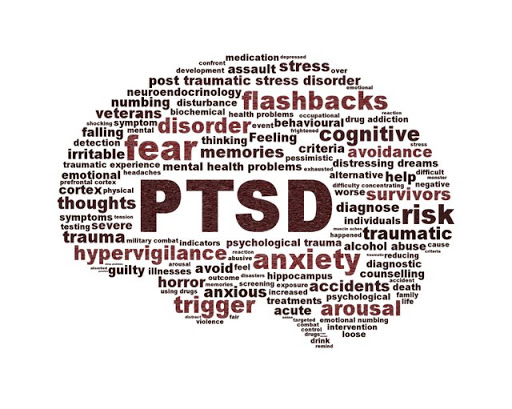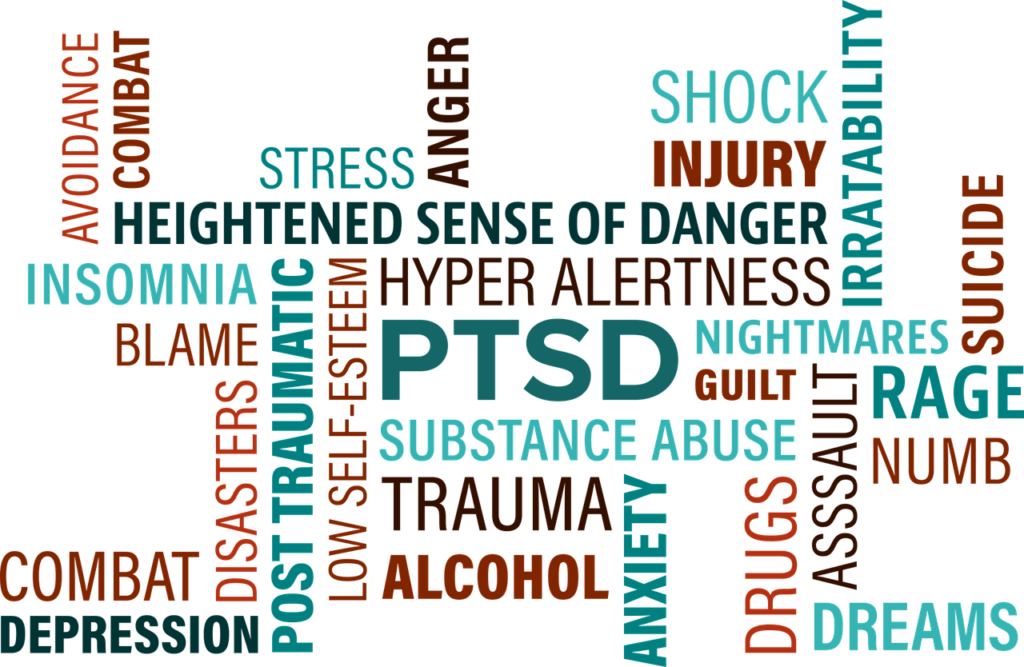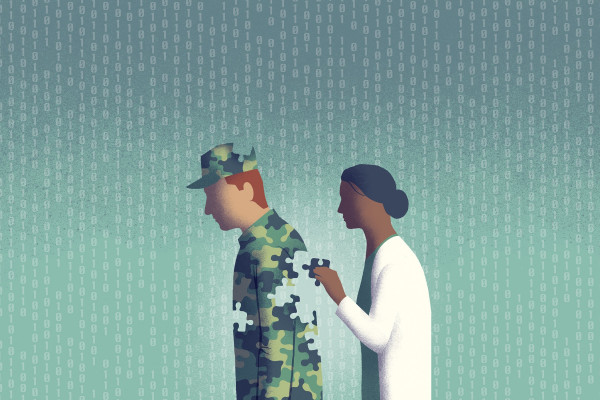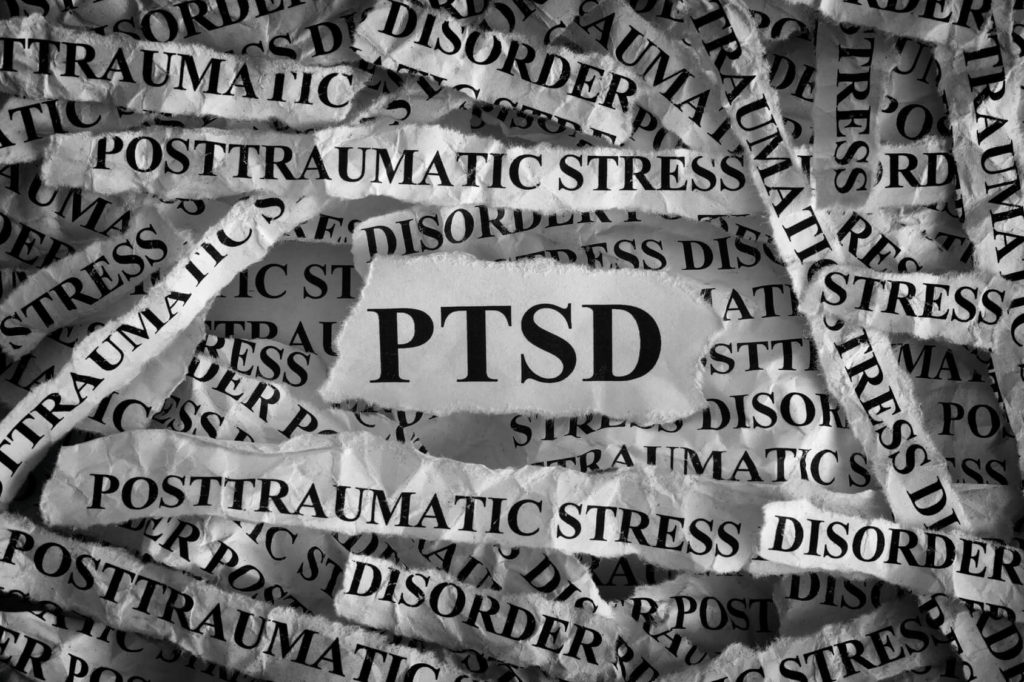PTSD
PTSD is a psychological disorder which can develop following a traumatic event such as rape, sexual abuse, military combat, domestic violence, an act of terrorism, road traffic accident.
PTSD can also occur after consecutive negative occurrences such a being put in a continual fight, flight or freeze situation. This can range from an internal or external reaction to a stimuli.
Why getting help is so important
Apart from the obvious benefit of feeling better once resolved, if it is left untreated PTSD can lead to other problems such as depression, anxiety, panic attacks, insomnia, eating disorders and excessive consumption.
Symptoms:
PTSD, Posttraumatic Stress Disorder, consists of a series of symptoms that arise from a traumatic event which occurs in one’s life. The symptoms of PTSD usually consist of:
- Intrusive flashbacks (reliving a violent scene in your mind)
- Nightmares or recurrent bad dreams
- Anxiety disorders resulting in chronic physical pain, body tensions, teeth grinding
- Over reacting to situations with seemingly little control
- Sudden outbursts of rage or temper tantrums
- Unexplained fears or phobias, such as a fear of butterflies
- Sleep disorders
- Inability to relax the mind and the body
- Persistent stress, tension, fears
- Inability to concentrate, loss of memory

The Five Symptoms of PTSD and How Hypnotherapy Helps
The many troubling symptoms of Post-traumatic Stress Disorder are broken down into these DSM-V diagnostic categories: Exposure, Intrusion, Avoidance, Alteration, and Arousal. Hypnotherapy is highly effective in the treatment of PTSD because it goes right to the root of these symptoms.
Below is an overview of each of those five areas, and how hypnotherapy helps treat them.
1. EXPOSURE
Clients experience a traumatic event (an accident, assault, disaster, or act of terror) or a prolonged series of traumatic events (such as ongoing psychological, physical, and/or sexual abuse as a child or adult), and the trauma changes their perceptual experience of the world around them.
The limbic system is designed to respond to a threat or attack in one of the following ways: fight, flight, or freeze. Trauma imprints upon the brain and body in such a way that clients continue to live as though the trauma is happening in the present.
How does hypnotherapy help?
Hypnotherapy cannot erase traumatic events, but it can directly address the event(s) and their effects. Hypnotherapy allows clients to access information and ‘data’ that is stored in their physical bodies, their subconscious mind, and their energetic fields. The actual traumatic event can be examined; the wide array of emotion surrounding it can be claimed, processed, and expressed; any negative conclusions or beliefs (that have often directly contributed to life-long behavioral patterns) can be released and transformed.

2. INTRUSION
As mentioned above, trauma impacts the brain and body in myriad ways. Nightmares, flashbacks, distressing memories, and reactivity to cues or reminders of the event(s) are the most common ways in which trauma interrupts daily life. The majority of clients experiencing intrusive symptoms often feel a total lack of control over their minds and bodies, as though the trauma has hijacked their own sense of agency and free will.
How does hypnotherapy help?
In a hypnotherapy session, the client is given multiple tools, resources, and opportunities to take back a sense of control. One method, called ego strengthening, employs a variety of techniques to help clients make direct contact to the parts of themselves that are strong, wise, and brave. By doing this, and providing a physical anchor to ‘lock in’ the resource via mind-body connection, clients gradually remember and reclaim their own agency. They are reminded of their own strengths and virtues, which is incredibly healing.
Another useful component of hypnotherapy is teaching the client ways in which they can modulate their own physiological reactivity. This is often done while the client is in trance, but a hypnotherapist can also teach the client how to titrate their shock symptoms in a regular session. For more on the treatment of shock, click here.
3. AVOIDANCE
As can be expected, a victim of trauma will do what it takes to avoid a recurrence of the feelings associated with their trauma. Many avoidance symptoms can result from conscious choice (avoiding people or places, for instance), but clients also ‘avoid’ via dissociation or excessive behaviors. The latter are far less conscious, but no less purposeful. The purpose of avoidance is to attempt to distance oneself from the trauma…but when trauma is rooted in the brain and body, what results is a fragmented sense of self. Avoidance precludes connection; thus, be it months or years later, clients come to us reporting that they feel detached, numb, and/or stuck.
How does hypnotherapy help?
One of the primary goals of hypnotherapy is restoration of the self: for the physical, emotional, mental and spiritual parts of the client to be unified, balanced, and whole. From this place, healthy connection can be born. Hypnotherapy gives a voice to the lost parts of the self, the parts that were hidden away or shrouded in negativity as a means to survive.
Several types of regression can be successfully used to help the client process all manner of traumatic memory. The hypnotherapist is able to use creativity and imagination to help the client work through the past event, but this time, with resources they did not have at the time of the original event(s). When this work is done in trance, it changes the way the memory is stored, and the way it functions in the body and mind. Clients are no longer held hostage by the past.

4. ALTERATION
Trauma changes us…it alters personality, mood, memory, motivation, cognitive function, and perception. By extension, it changes relationships, families, and systems. During a traumatic event, not only are sensory perceptions altered, and any previous sense of safety forever changed…but a victim of trauma displays notable shifts in the conclusions they draw. They form new, negative conclusions about themselves (‘I deserved it; I’m bad; I shouldn’t have been there; My body is not my own; It was my fault.’). They also form negative conclusions about other people, and the world in general (‘The world is a scary place; People are evil; Men are dangerous; Trust is foolish.’).
How does hypnotherapy help?
Hypnotherapy opens a portal to the subconscious. With a skilled hypnotherapist, clients can access the pivotal events surrounding their trauma during careful and modulated regression. In trance, they clearly experience the moment(s) in which their conclusions turned negative. Clients then begin to change those distorted beliefs, and reclaim what was lost. A negative conclusion such as ‘I am bad’ is then replaced with ‘I am good’ or ‘I am lovable,’ for instance.
5. AROUSAL
Lastly, a history of trauma, particularly when it goes untreated, results in marked behavioral and functional changes. Trauma that is stuck in the body will inevitably try to work its way out; this can manifest in chronic shock, somatic or physical illness, or arousal symptoms such as hypervigilance, exaggerated startle, or problems sleeping or concentrating. Reckless or high-risk behavior could be another way that arousal manifests in behavior.
How does hypnotherapy help?
A major component of healing trauma is giving clients the ability to complete the action that they were not able to do when their trauma originally occurred. Trauma is rooted in the body, in the paralysis and the inability to take action that results from the ‘freeze’ response.
It is useful to look at arousal symptoms as ways in which the body is trying to heal, trying to get our attention. Alternatively, arousal symptoms are a reflection of the ‘stuck’ trauma response (fight, flight, freeze). The healing of trauma cannot be complete without allowing the body to move. Part of our role as therapists is to help the client to unfreeze: to usher their emotions and thoughts into conscious awareness, process them, and release them.
In hypnotherapy, we encourage clients to move their bodies, to strike out. What movement, what reflex was their body unable to do in that moment of helplessness? In trance, the client is provided with a corrective experience; they can hit the perpetrator, scream out loud, say NO, run away, defend themselves, push away a weapon, break out of a trap, tell a trusted person what happened. This additional corrective experience can be monumental in helping a traumatized client release the past and move forward in their life.
Future Reading
PTSD facts and fiction are often hard to tell apart. This may be due to the fact that PTSD is a relatively “young” diagnosis. Throughout history people have recognized that the experience of extreme stress can have a profound impact on the mind and body; yet, it was not until 1980 that the diagnosis of PTSD as we know it today came to be. Because of this, there are many myths surrounding the diagnosis. Here we will try to debunk some of these myths:
“Having PTSD Means I am Going to Go Crazy.”
This is definitely not true. Now, the symptoms of PTSD can be very disruptive. You may feel constantly on edge or as if danger is lurking around every corner. You may feel cut-off from people and your own feelings. You may have difficulties concentrating or find that you get angry at the drop of a hat.
These are not signs of going crazy. They are simply your body’s attempt to cope with an extremely stressful or traumatic occurrence. Remember, the body’s main goal is to survive. When you experience a stressful event, your body responds by preparing to either “fight or flight.” That is, your body will prepare for some kind of action. You may experience “tunnel vision,” your muscles may get tense, and you may begin to sweat.
Normally your body is able to recover from this “fight or flight” syndrome. However, after experiencing extreme and traumatic stress, your body may stay in this mode, always being prepared for action in case that danger happens again. You may also expect that danger will definitely happen again. The world may no longer appear safe, and this is a very reasonable response depending upon what you have experienced. You are not going crazy. Your body is just trying to cope.
“I’ll Never Get Better.”
Again, this is not true. In fact, there have been many recent advances in the treatment of PTSD, and people are definitely being helped by these treatments.

“If I Get PTSD, it Must Mean that I Just Wasn’t Strong Enough.”
There could be nothing farther from the truth. True, not everyone develops PTSD after experiencing a traumatic event, and we are still learning about what factors may make one person more likely to develop PTSD over another. However, we have no evidence that PTSD stems from “not being strong enough.” Some risk factors for PTSD include having experienced other traumatic events, having a history of mental illness, a family history of mental illness, and the severity of the trauma experienced.
Many people may feel shame or embarrassment after experiencing a traumatic event. It is important to remember that developing PTSD is not your fault. However, it is up to you to seek out help.
“Why Do I Have PTSD? I Wasn’t in a War.”
Many different traumatic experiences have been linked to the development of PTSD. PTSD was originally viewed as a soldier’s illness, being called “combat fatigue” or “shell shock.” However, we now know that a whole host of traumatic experiences can lead to PTSD, although some are more likely to lead to PTSD than others.
“I am Never Going to Get Over This.”
No treatment is ever going to make you forget what happened to you, and you will likely always have some memories and thoughts about your traumatic event. However, treatment can limit the extent with which this event and the symptoms connected to it interfere with your life.
Following a traumatic event, some people even feel as though positive growth and change occurs. Of course, this may take some time. You do have the potential to “get over it” in regard to being able to lead a meaningful and fulfilling life despite the experience of a traumatic event and PTSD.
There are likely many other myths out there on PTSD. Remember, if you have experienced a traumatic event and/or have PTSD, you are not alone. Recovery is possible. There are many people and resources out there waiting to help you on the path to recovery and healing.
